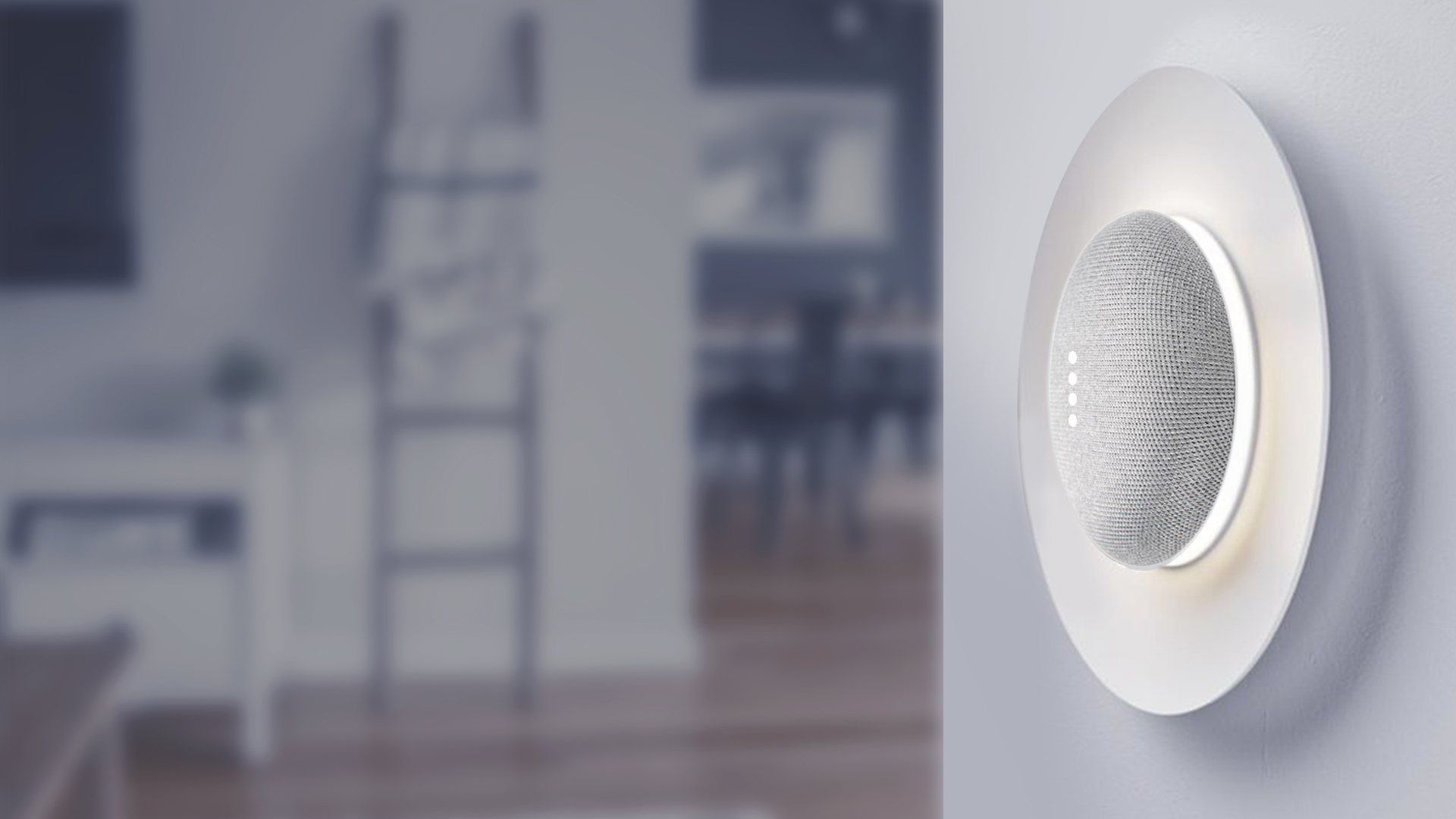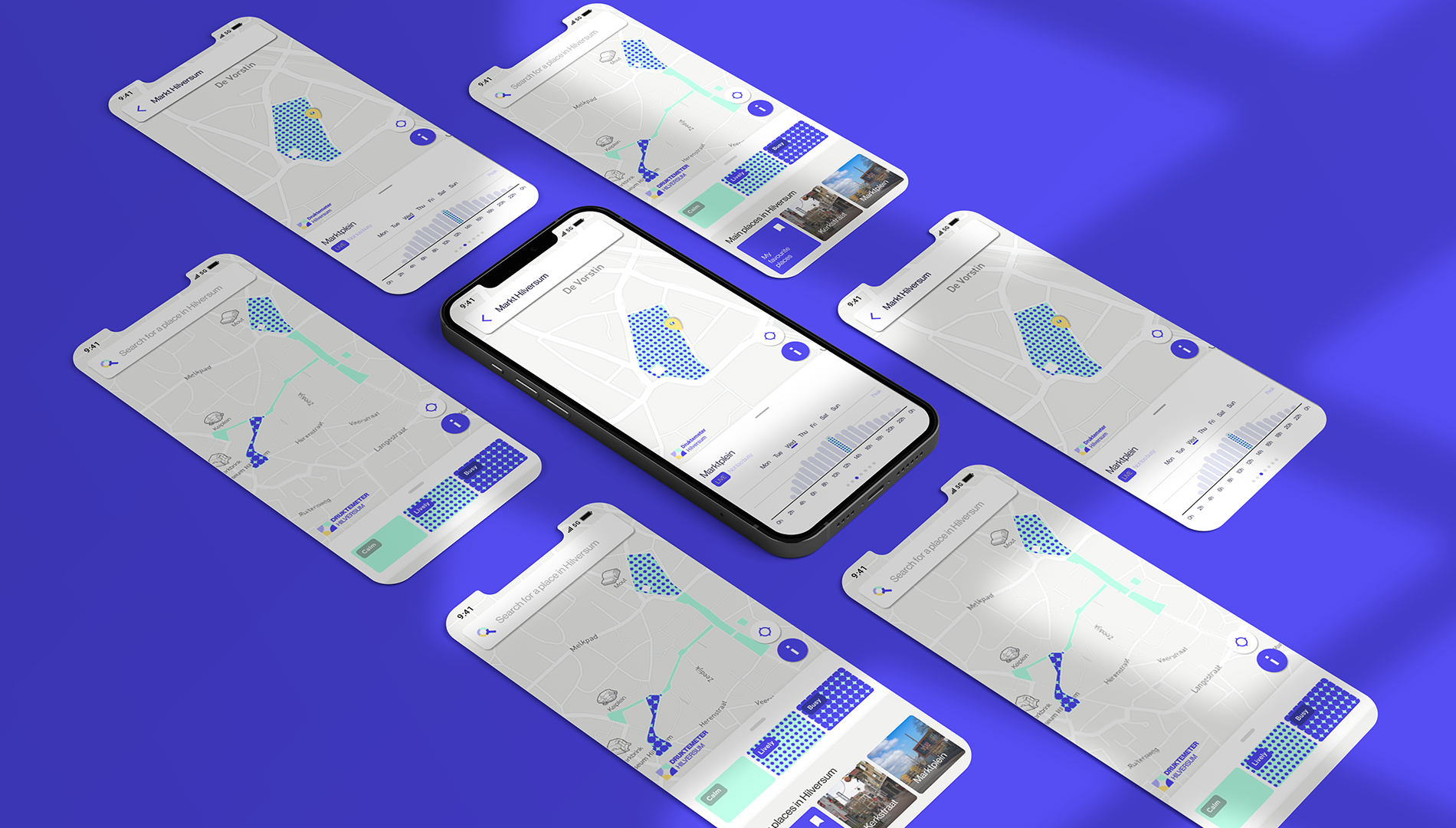
Smart Waste Management
Sorting Out Waste the Right Way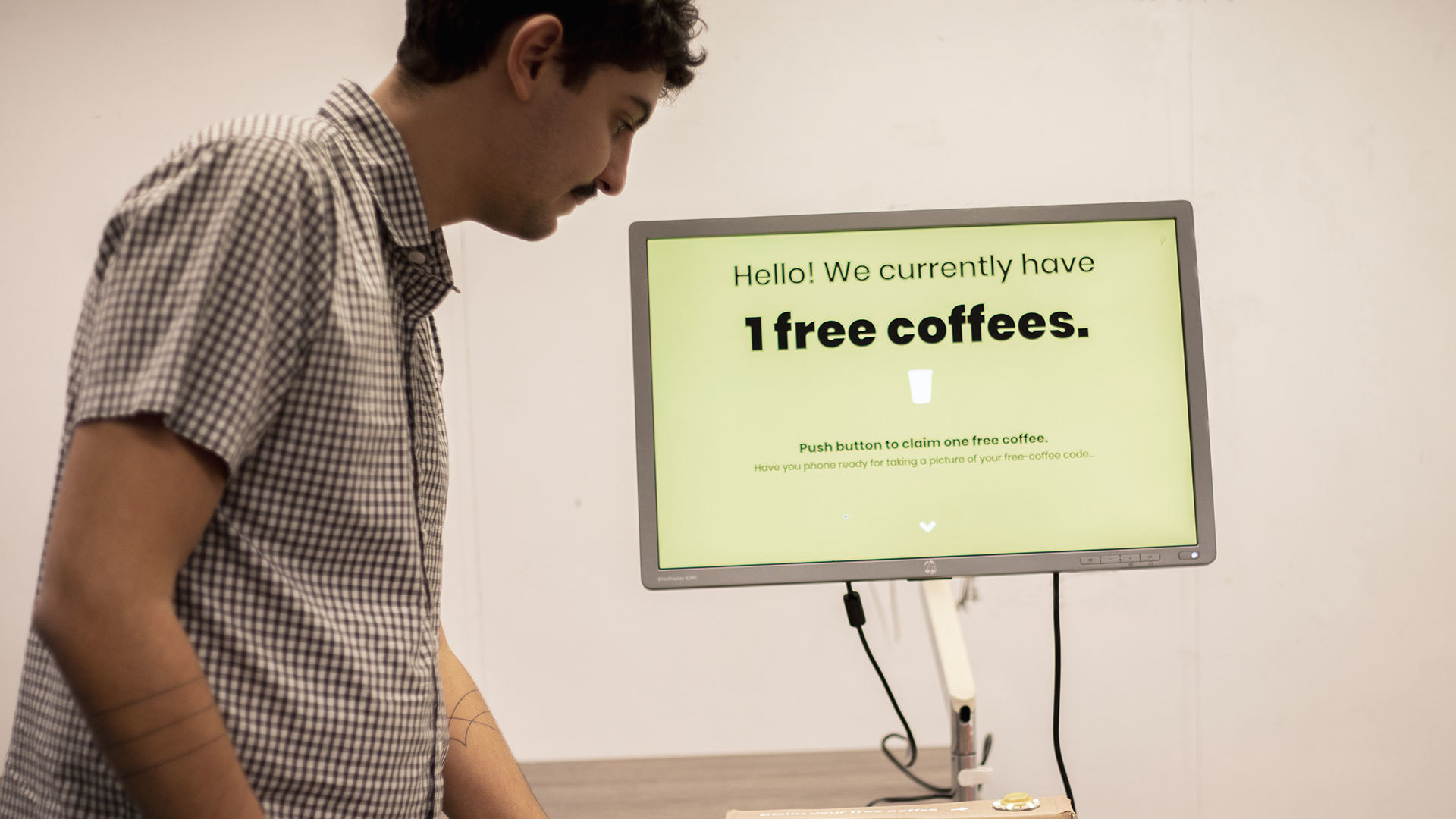
-
Client:
HvA
- Team:
-
Disciplines:
Concept, Interaction Design
-
Schoolyear:
2019-2020
The Amsterdam University of Applied Sciences (AUAS) and the University of Amsterdam (UvA) are aiming to become more sustainable as the city of Amsterdam moves towards having a circular economy in 2030. However, exactly how trash needs be sorted in order to be recycled remains a confusing topic.
At the AUAS and UvA, about 75% of waste produced is incinerated. As students and staff are confused about how to properly sort their trash, they end up putting their waste in the wrong bin, thus contaminating otherwise recyclable waste streams. The schools’ waste is collected and transported to recycling facilities but if the stream has become too contaminated, it cannot be recycled and needs to be transported to another facility to be incinerated. This process is expensive, ineffective, and it has negative consequences for the environment.
Sorting Out
The AUAS and UvA plan on changing the sorting process and switching to a new collection company that will be able to more efficiently recycle their waste. We were tasked with clarifying the new sorting process on the AUAS campus, instructing students and staff on how to sort their trash, and showing that the school is taking action towards becoming more sustainable.
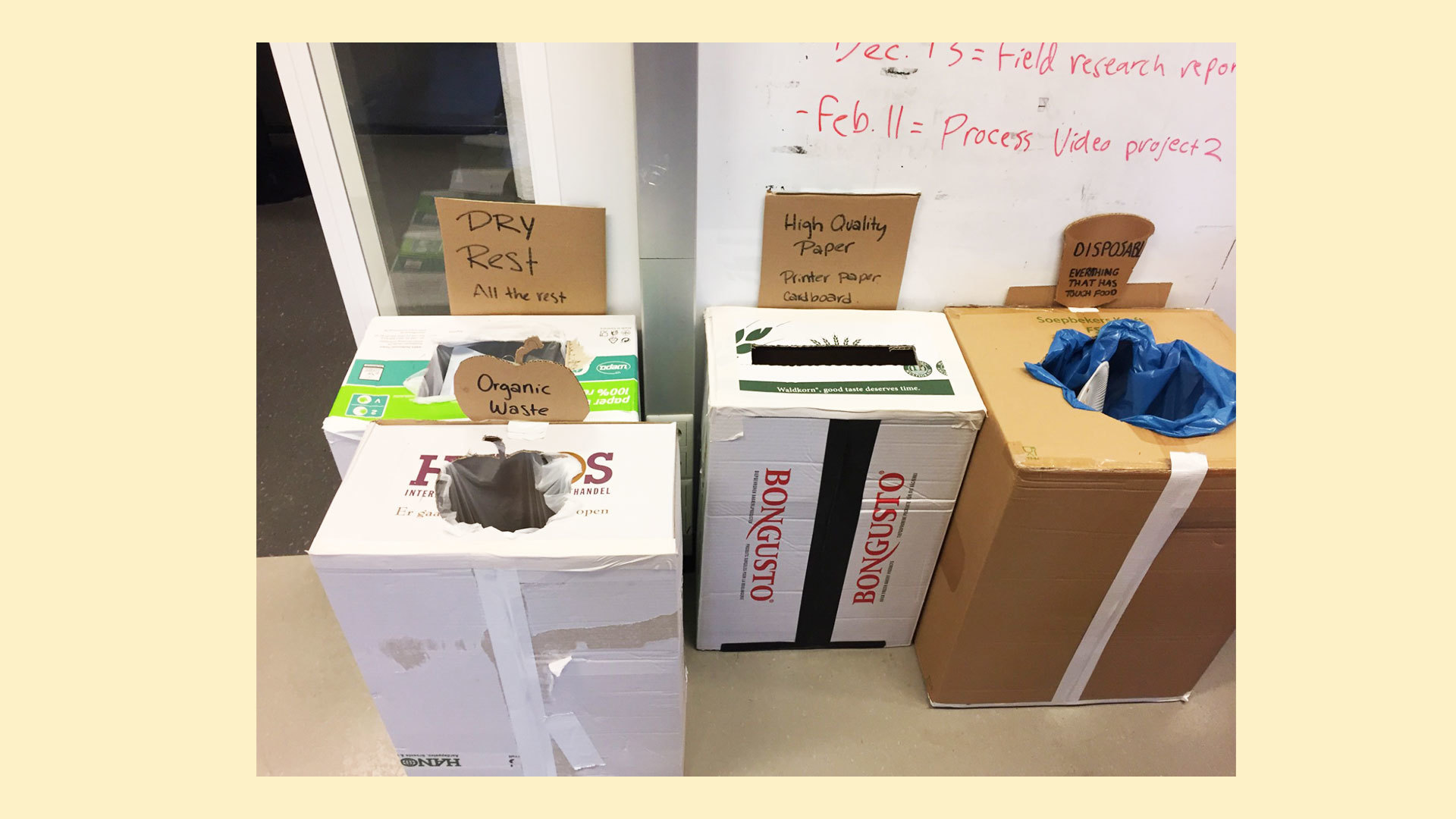
We started to investigate how this new sorting system might play out on campus and conducted two experiments simultaneously.
First, we made our own bins out of cardboard boxes. We labelled them according to the new sorting system outlined in our brief, and included an additional bin labelled “Confusion” for all the things people were unsure where to trash. We put these bins in our studio for a week, and then analysed their contents.
Then, on the cafeteria, we placed colourful stickers on disposable packaging and matched those colours with posters on the cafeteria bins. We wanted to see if colour-coding could help clarify the trash sorting process. , We also asked 10 students to keep a diary of the trash they produced at lunch time, and if and how they sorted it.
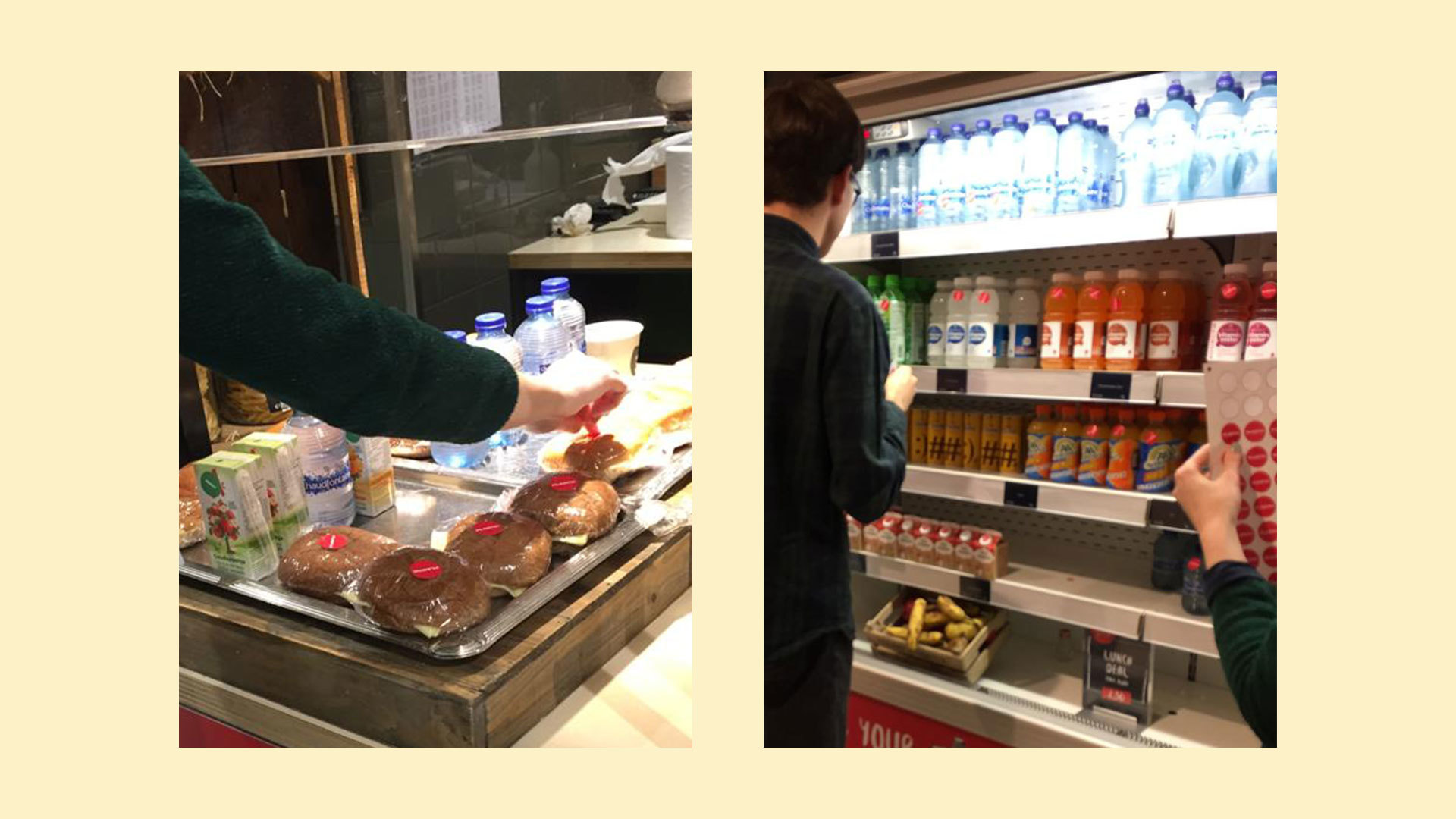
Through these experiments, we found that:
- people are most confused on how to sort coffee cups, disposable cutlery, and food packaging. These products are, therefore, the biggest cause of contamination in the other streams;
- Simple labels aren’t enough for people to be able to sort their trash correctly;
- People think they know how to sort their trash but oftentimes they are mistaken.
Encouraging A Collective Effort
After analysing the results of our research, we found that there is an inherent lack of motivation to sort one’s trash. Most people don’t put too much effort into throwing trash away. Not only that, people don’t fully trust that the school actually recycles its trash. All of this coupled with poorly labeled bins leads to low effort in sorting correctly.
We also found that people who do try to sort their trash tend to do it according to what they think is correct, rather than what the signage on the bin tells them to do. Because of this, we shifted the focus of our project from informing students about how and why to sort their trash, to motivating them to act more sustainably. Since our research showed that the largest cause of contamination was coffee cups and other food related waste, we directed our solution towards separating this kind of waste from other waste streams to avoid contamination.
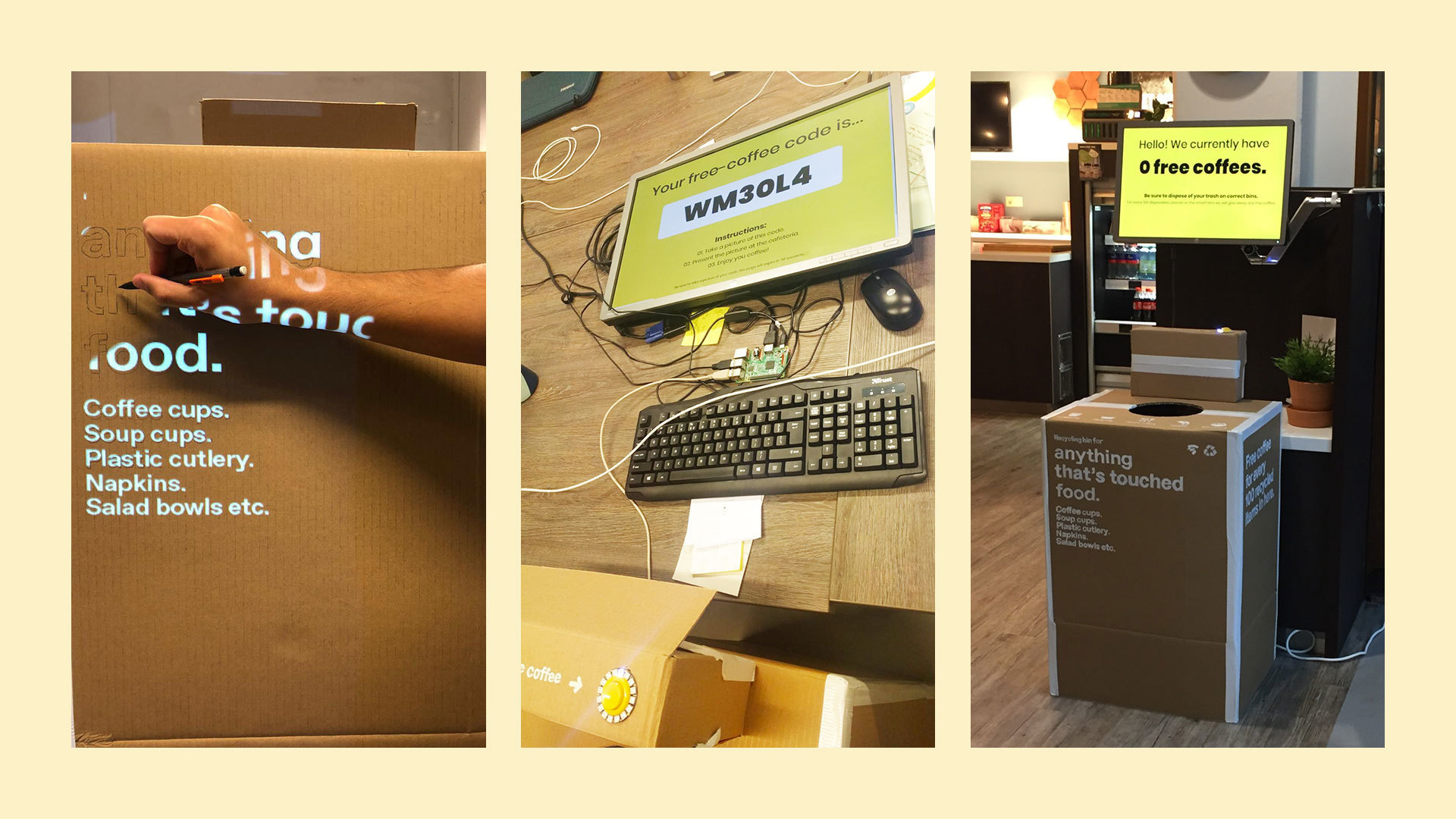
Motivational Nudges
We drew inspiration from the Italian tradition of Sospeso, in which cafe patrons can pay ahead for coffees that can later be claimed by the less fortunate. In our take on this tradition, we created a smart bin for the disposal of coffee cups and other food related waste that generates a collective reward for the community when trash is sorted correctly.
Our prototype boasts three functions:
- it informs visitors to the university’s coffee corner how to sort their used cups and other disposables;
- It counts up and displays how many items have been thrown away;
- It generates a coupon code for a free coffee for every 100 items that are thrown away.
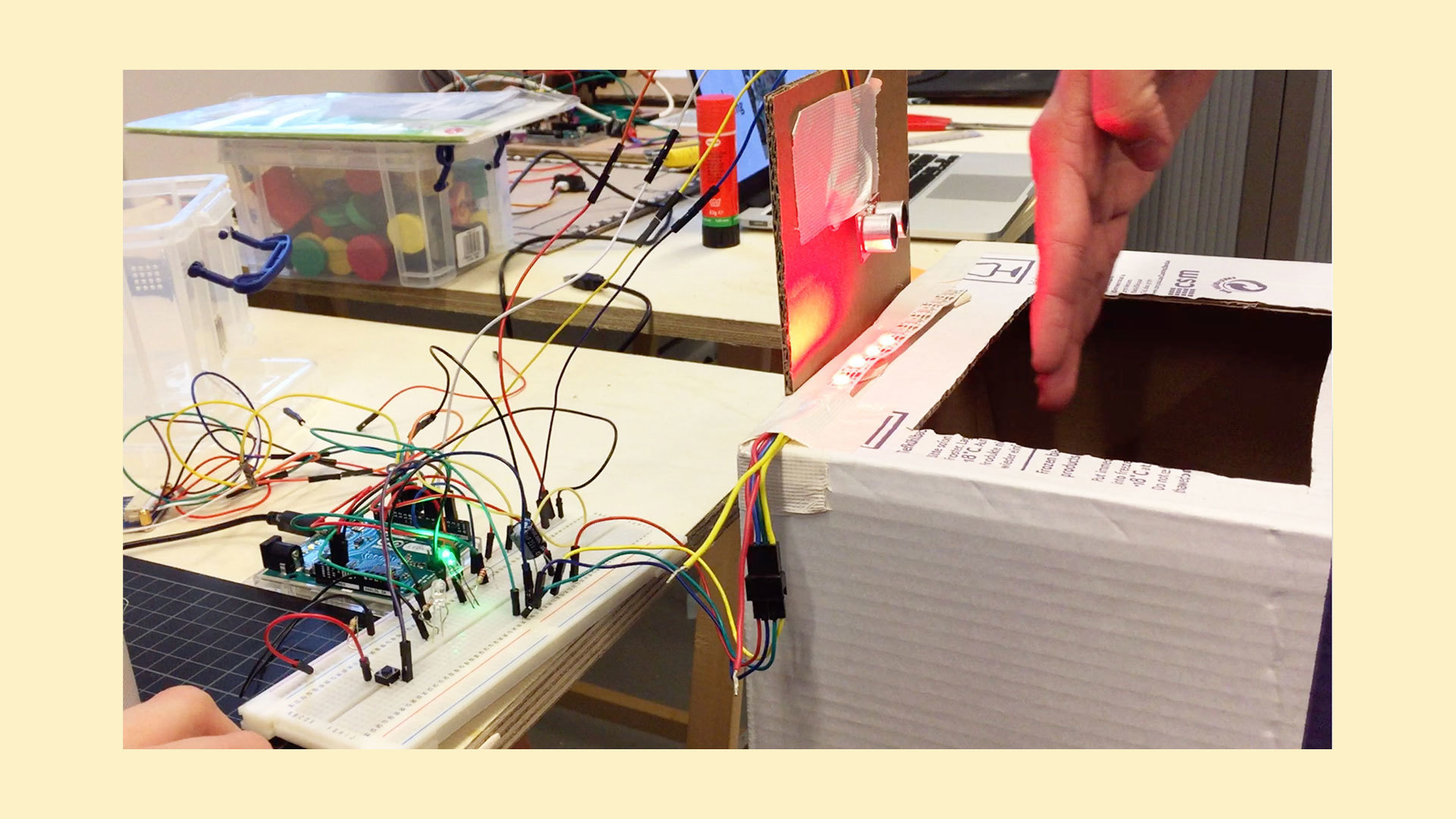
By generating a reward that can be claimed by anyone, the system stimulates the entire community to work together into disposing food related waste correctly. This joint effort prevents the contamination of the school’s recyclable waste streams.
This prototype serves as a proof of concept for a smart bin system that could be implemented throughout the university campus in the future. Our prototype & research findings were presented to the HvA Waste Management committee for their consideration while creating the new waste management system to be implemented in the coming years.
